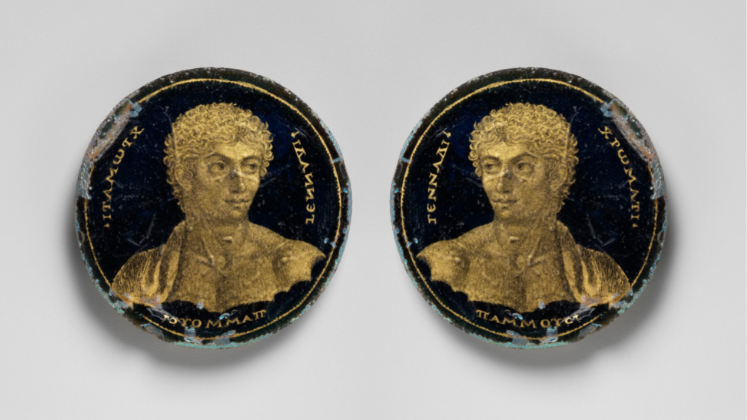Many research projects in the humanities and social sciences result in creative and artistic outputs, but whilst a sprawling and contested industry has emerged to monitor and evaluate written research outputs, the impact of visual art is less well understood. Drawing on a study using Q Methodology to evaluate an art exhibition, Lesley Brook discusses how analysing the emotional impact of art can provide rich insights into artistic practice and engagement.
What impact does art have? What evidence can we gather for art impact? These are important questions for artists and curators, who are also researchers in the higher education system, and for the institutions that employ them. Achieving and evidencing impact helps access to funding for research projects and research institutions, and demonstrates the value of art practice as research, to researchers, management, government and our publics.
Standard measures, such as visitor numbers, demographics and satisfaction, do not tell us what is actually happening for visitors to an art exhibition. Emotions are key to engaging people, with the potential to influence attitudes and hence behaviours. To explore such responses, I undertook to evaluate the emotional impact of an exhibition of artworks, The Complete Entanglement of Everything, which was held at the Dunedin School of Art, Dunedin, New Zealand in 2020. The exhibited artworks by many artists in a wide variety of genres can be seen in the exhibition catalogue and a photographic record of the exhibition. As well as evaluating the impact of this particular exhibition, the research provides insights to inform artists and curators seeking to achieve impact from their work.
 Jodie Gibson, TheCompleteEntaglementofEverythingExhibition_166, Copyright: Dunedin School of Art, Otago Polytechnic, Te Pūkenga – New Zealand Institute of Skills and Technology, via Flickr.
Jodie Gibson, TheCompleteEntaglementofEverythingExhibition_166, Copyright: Dunedin School of Art, Otago Polytechnic, Te Pūkenga – New Zealand Institute of Skills and Technology, via Flickr.
The study piloted the use of Q methodology with images as a way of gathering evidence of the emotional impact of art. Q methodology is often used in psychological research as it is designed to capture the subjective viewpoints of participants, by their sorting of what is usually a set of statements. Comparison of the sorts reveals groups of participants who share common points of view. Q methodology has been used successfully: to gather emotional responses to art through sorting a set of written statements, to gather other kinds of responses to artworks by sorting images, rather than statements and to gather emotional responses to images that are not artworks. However, I was unable to find any other example of Q methodology being used to gather emotional responses to art by sorting images. The pilot study was also novel in that I was using Q methodology with images to evaluate participants’ responses not to the images themselves, but to the original artworks they had already experienced in the exhibition.
Within two weeks after seeing the exhibition, each of the 25 adult participants was shown a set of 54 laminated photographs of the artworks, and asked to sort the photographs according to their emotional response to the artwork depicted in each photograph. The artworks were sorted into a common pyramid shape from the strongest negative emotional response on the far left, to the strongest positive emotional response on the far right.
Pictures from the exhibition arranged into a sort via the Q – Methodology, reproduced with permission of the author.
A semi-structured interview followed each sorting exercise. Participants were asked to explain their four strongest positive emotional responses and four strongest negative emotional responses. This produced rich data. Many participants named multiple emotions for individual artworks, including a mix of negative and positive emotions. As they sought to identify their emotions, they verbalised the process of forming the emotions, revealing a range of factors that were influencing them.
Because participants use the same pyramidal layout to sort the images, statistical comparison of the participants’ Q sorts can be carried out. This analysis revealed five different groups amongst the 25 participants. One participant did not fit any of these groups, and three participants sat across more than one group. While it’s not possible to generalise from participants to all viewers of an exhibition, this use of Q methodology does reveal a range of responses amongst viewers, and sheds light on which viewers are likely to respond to what. The results of the Q methodology study have been published in 2022. The differences between the five groups of viewers were able to be visually demonstrated by their different combination of positive/negative emotional responses to just three artworks; and were mostly explained by their different levels of experience with contemporary art, and by their different attitudes – whether feeling negative emotions in response to art is a good (positive) thing.
The theme of the exhibition was the Anthropocene, the effects of human activity on the environment. The curator was therefore interested to know whether and how viewing the exhibition might have influenced people’s feeling about environmental issues. Participants were therefore asked how they felt about the effects of human activity on the environment and whether any of the artworks represented how they felt. Participant responses focussed on attitudes and values, suggesting that a values-driven approach is needed to improve human and institutional capacity for environmental action. These findings were also published in 2022.
 Jodie Gibson, TheCompleteEntaglementofEverythingExhibition_148, Copyright: Dunedin School of Art, Otago Polytechnic, Te Pūkenga – New Zealand Institute of Skills and Technology, via Flickr.
Jodie Gibson, TheCompleteEntaglementofEverythingExhibition_148, Copyright: Dunedin School of Art, Otago Polytechnic, Te Pūkenga – New Zealand Institute of Skills and Technology, via Flickr.
The exhibition reinforced or strengthened six participants’ negative feelings about environmental issues. Six participants were encouraged to see such a large community of artists responding to environmental issues. Five participants reported changed perspectives from seeing the exhibition.
The curator hoped also that the exhibition might help build people’s resilience to cope with environmental challenges through an increasing sense of connectedness, so this topic was also explored through interview questions. These findings about connectedness have been published in 2021. Twenty-three of the 25 participants identified one or more artworks that gave them a sense of connectedness with others – even if no people were depicted in the artwork. Twenty-three of the 25 participants identified one or more artworks that gave them a sense of connectedness with the environment. Twenty participants identified one or more artworks which helped connect thoughts and feelings for them.
This study provided evidence that the exhibition succeeded in emotionally engaging participants, in influencing their feelings and perspectives on environmental issues, and in contributing to feelings of connectedness. The study also demonstrated that Q methodology can be used effectively with images of artworks to evaluate emotional responses to the artworks themselves. The findings have been published and presented to artists and curators to inform their practice. The combination of Q methodology with semi-structured interviews generated rich data and yielded deep insights into the impact of an exhibition of art, namely the group personas of participants, the complexity of their emotional responses, and the range of factors influencing those emotional responses.
The content generated on this blog is for information purposes only. This Article gives the views and opinions of the authors and does not reflect the views and opinions of the Impact of Social Science blog (the blog), nor of the London School of Economics and Political Science. Please review our comments policy if you have any concerns on posting a comment below.
Image Credit: Copyrighted images reproduced with permission of the author.








